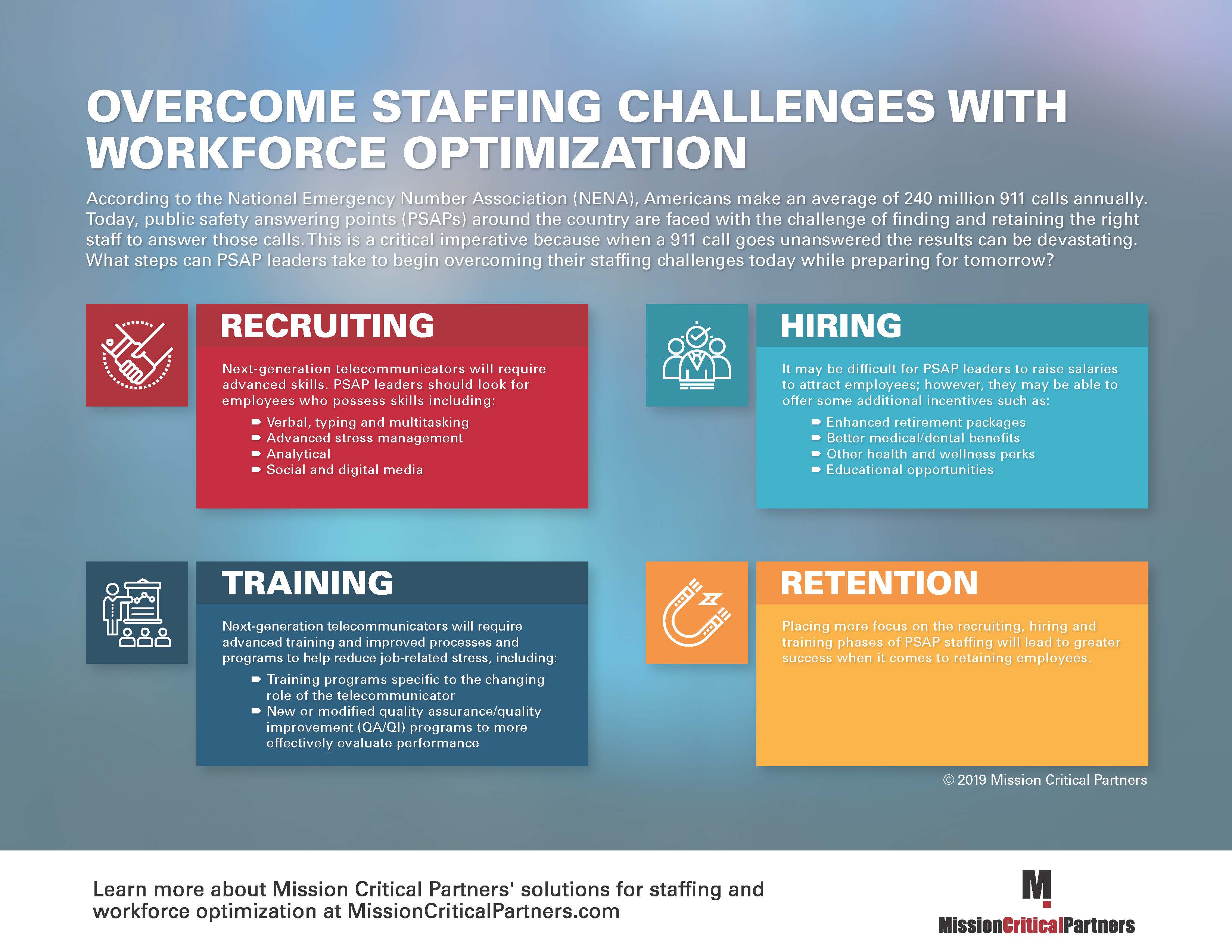The NPSBN and NG911 will generate new forms of data communications that will enable telecommunicators to make better-informed decisions when dispatching first responders. This whitepaper discusses the profound operational changes that 911 centers will need to make in order to take advantage of the new capabilities.
Because the Nationwide Public Safety Broadband Network (NPSBN) and Next Generation 911 (NG911) are both Internet Protocol-based, broadband-enabled platforms, they will generate new forms of data communications that will flow into PSAPs and improve situational awareness dramatically. However, telecommunicator jobs are already stressful. These stresses will rise quickly if PSAPs are not well-positioned to handle the enormous amounts of data that will be available in the future. Instead, PSAPs need to make a number of major operational changes. This whitepaper discusses those operational changes, which include:
- Data-analytics systems
- Data storage
- Modern, state-of-the-art communications systems
- Bolstered telecommunicator support programs
- Enhanced workplace training



